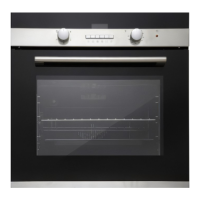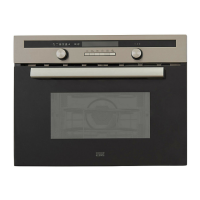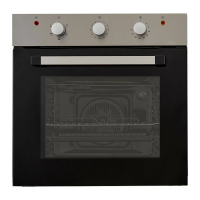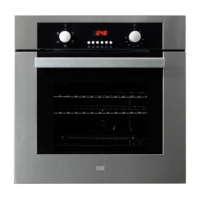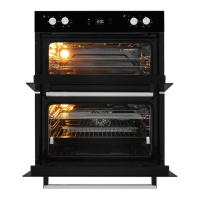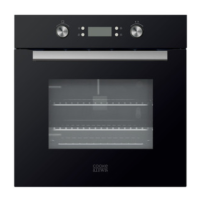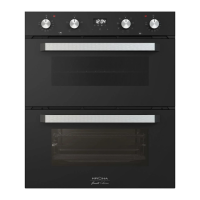OFF
Caution!
Do not use hot water, diluent, petrol, alcohol, kerosene, washing powder,
cleanser, alkaline detergent, acid, chemical cloth, etc. for cleaning so as
not to damage the enamel coating and plastic. The appliance must not
be cleaned directly with water as this could cause rusting or render the
insulation less efcient.
• The enamelled and stainless steel parts of the appliance should be wiped clean
using a damp cloth using the minimum possible amount of soap and lukewarm
water. Do not use abrasive powders or corrosive substances which could ruin the
surfaces. Remember stainless steel could tarnish and restoring these surfaces
can be difcult. Specialist stainless steel cleaners are available from major
supermarkets. After cleaning, these surfaces should be wiped with a clean cloth
and lukewarm water to remove any traces of detergent.
Warning!
Do not use excessive amounts of water when cleaning the product.
• If the oven is in use for an extended length of time, condensation may form. Once
the oven has cooled, remove the condensation using a dry cloth.
• The inside of the oven should ideally be cleaned when the oven is still warm using
a damp cloth and the minimum possible amount of soap and hot water. After
cleaning the soap should be removed using a clean damp cloth and hot water.
Dry the interior of the oven with a soft dry cloth after cleaning.
• Do not use abrasive powders, cleaners, sponges or acids (lime scale remover) to
clean the interior as these can damage the enamel. If the interior is very difcult
to clean use a specialist oven cleaner. Follow closely the instructions provided on
the packaging.
Care and maintenance
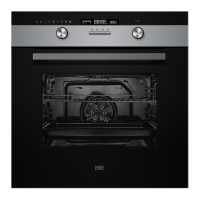
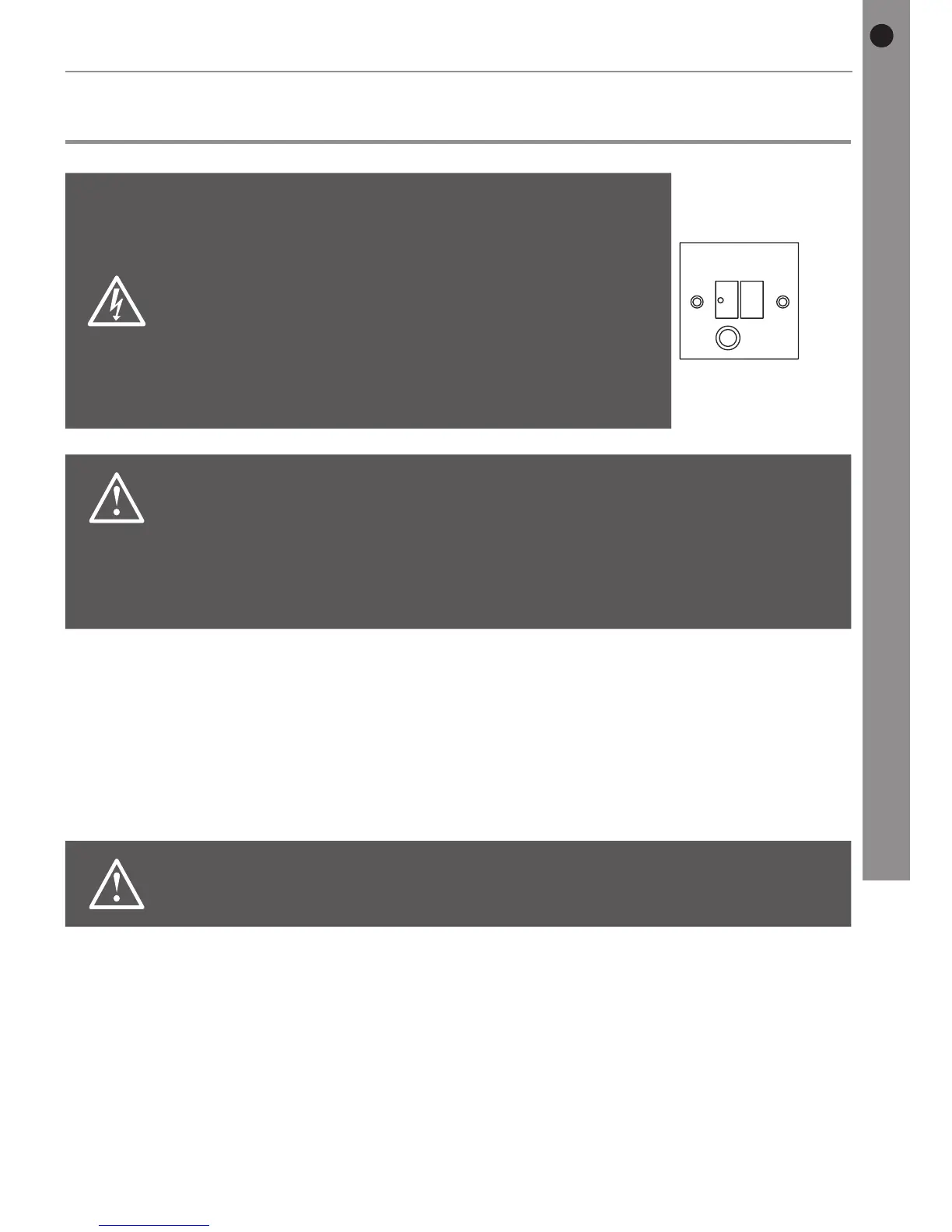